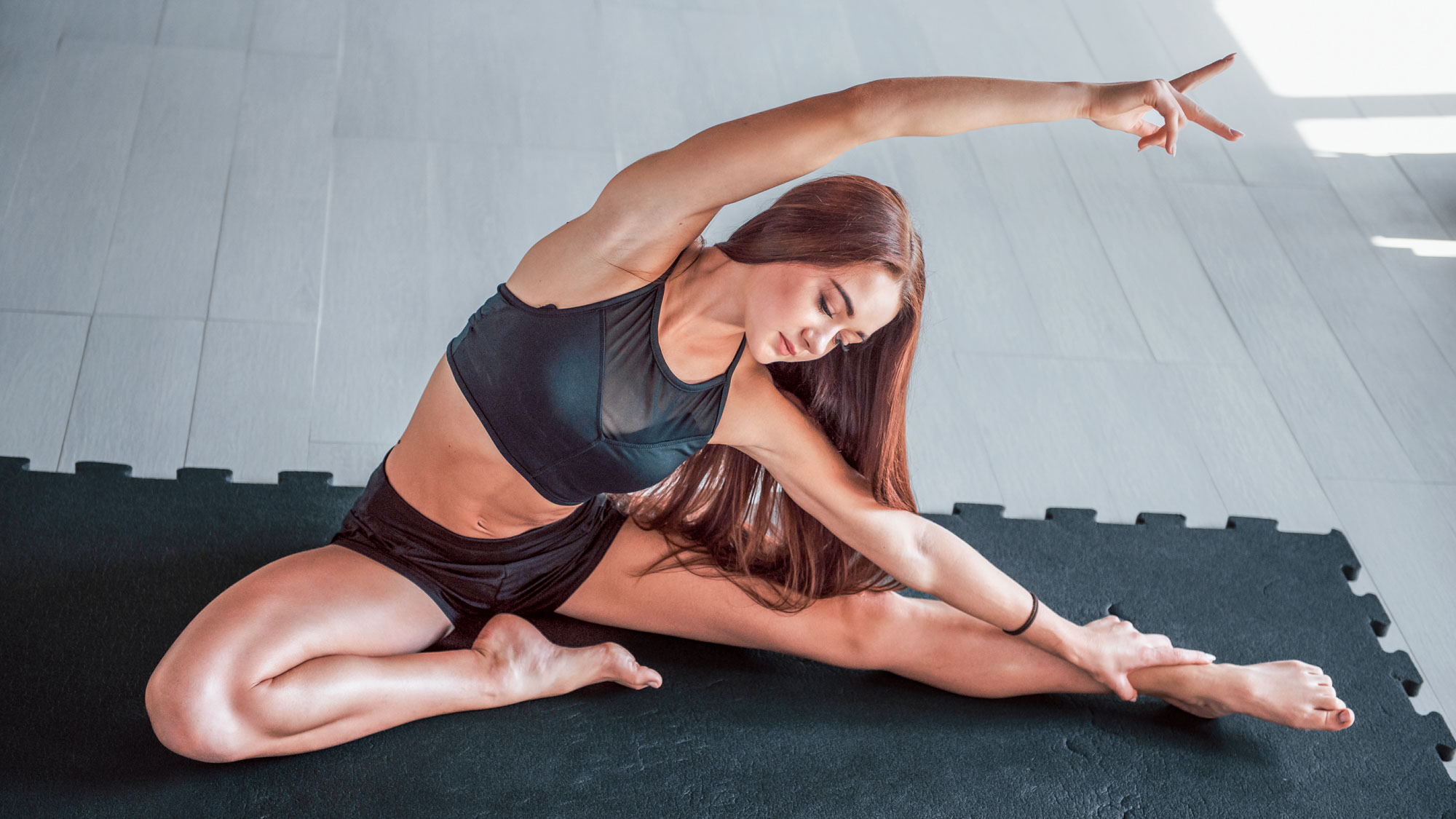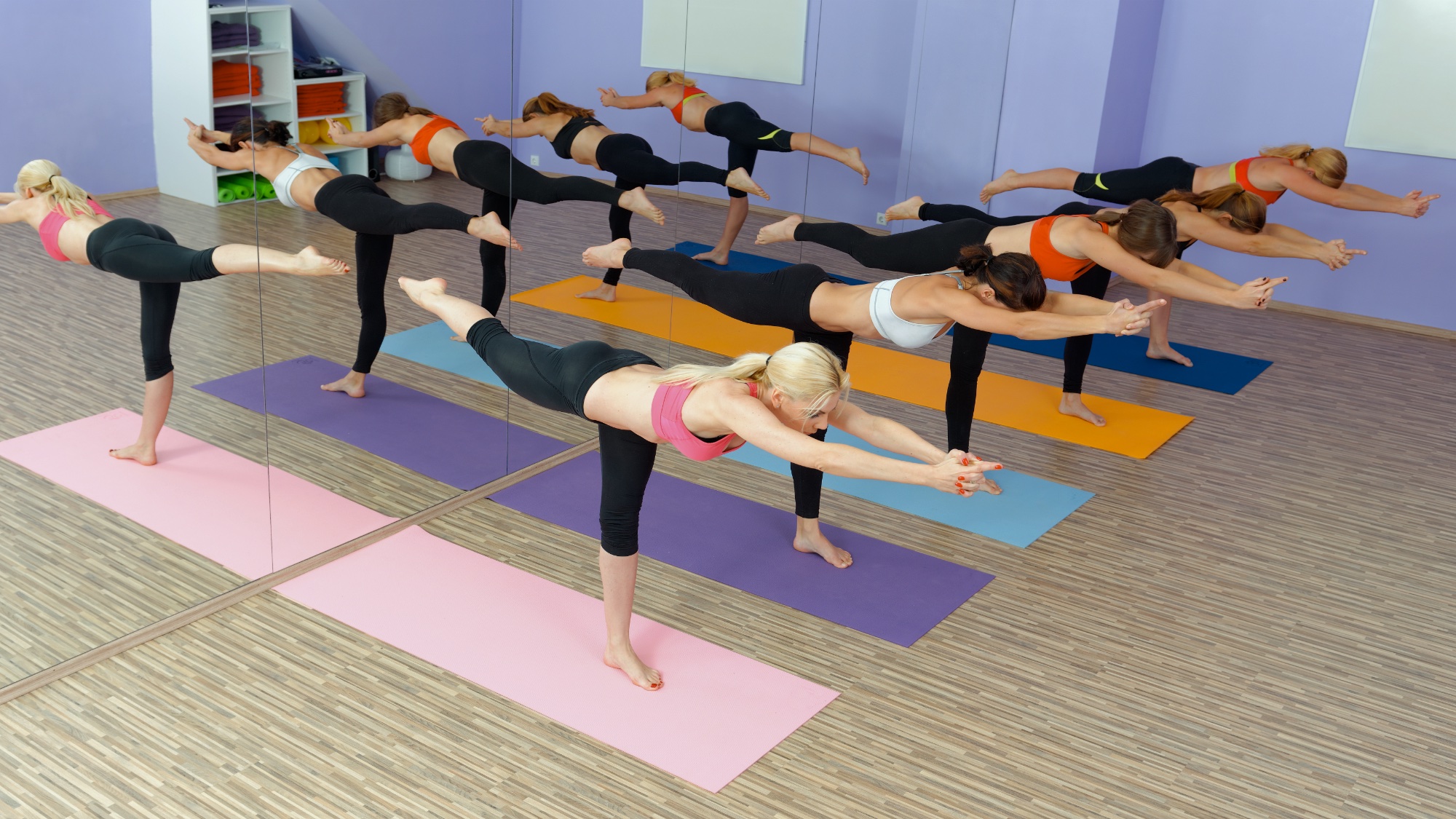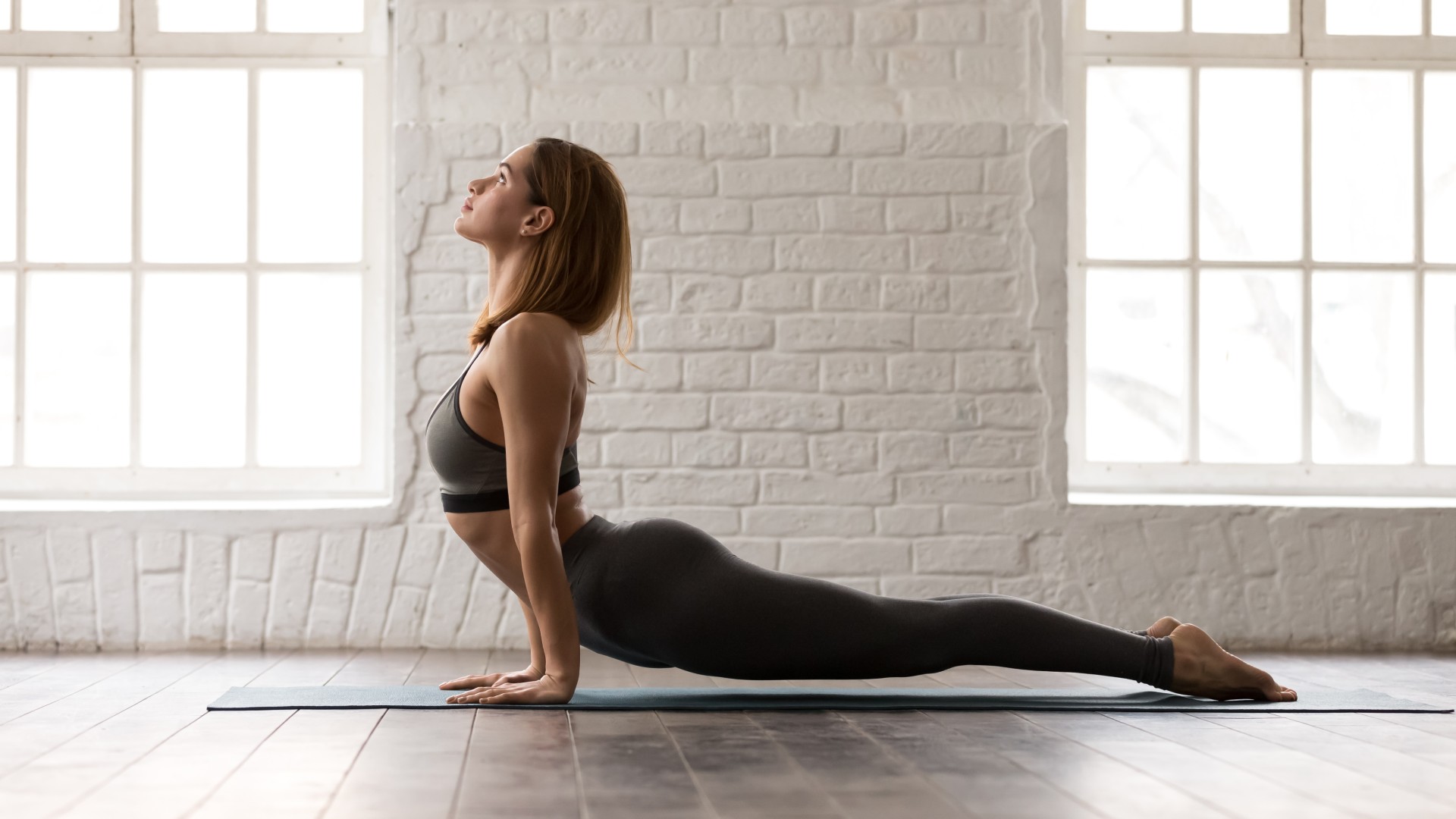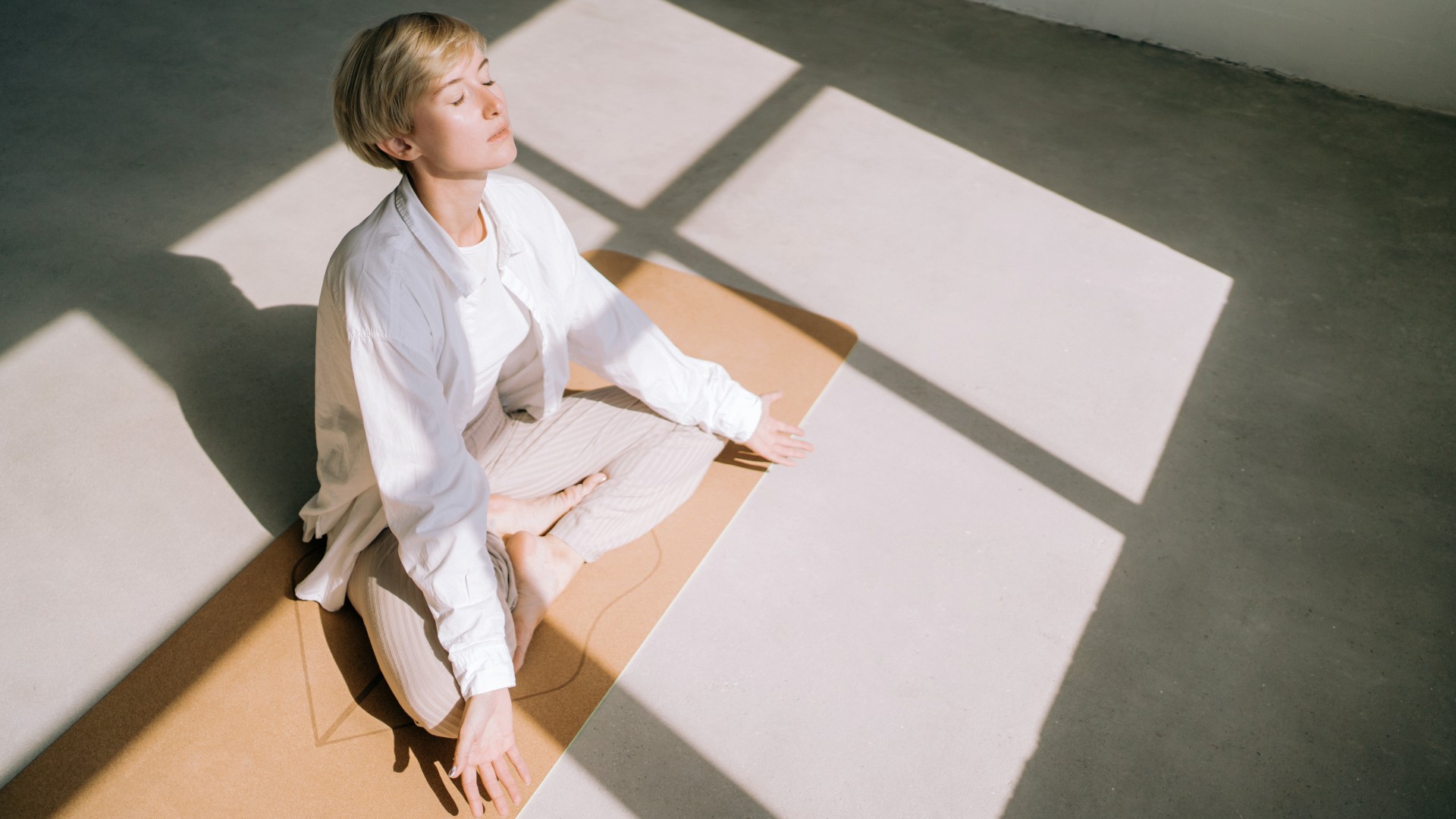
I remember walking into a hot yoga studio as a beginner for the first time. I thought to myself: “What am I doing?” I’d heard temperatures sizzle at 98 degrees, leaving yogis crumpling into a heap of sweaty limbs on their mats.
I’d also known some yogis walk out. The saying “Can’t take the heat? Get out of the kitchen” extends to the hot yoga studio, it seems. Fast forward over 10 years, I’m a hot yoga addict and my fears remain unfounded.
If you’re a hot yoga beginner, forget what you think hot yoga might, could, or should be for the next few minutes. Forget lemony atmosphere sprays, the array of buttery soft Lululemon leggings, or any expectation around what a class might look or feel like.
Just grab one of the best yoga mats for practice, read the three things I wish I had known as a hot yoga beginner, then get to a class and try it for yourself.
Is hot yoga ok for beginners?
Absolutely. But like many things in life, yoga beginners may benefit from preparing ahead of class. The heat can feel intense, depending on your experience with yoga and how you handle hot climates. This may take some adaptation.
The benefits of yoga are widely documented and include boosting mood and emotional wellbeing, building strength, balance and mobility, and increasing flexibility. But that’s just the start.
Introduce heat to your practice, and you might find greater relaxation, a deeper stretch, more flowy movement and an increase in mindfulness — an ability to connect better with your breath. You’ll definitely find a sweatier practice than without heat, regardless of anything else.
Sign up to get the BEST of Tom's Guide direct to your inbox.
Get instant access to breaking news, the hottest reviews, great deals and helpful tips.
That said, according to research published in the International Journal of Exercise Science, hot yoga doesn’t significantly increase aerobic intensity or calorie burn, despite its super-sweaty nature. But it can feel more intense, especially when temperatures reach 37 degrees Celsius and you're flowing through your third chaturanga in a row.
Unlike Bikram — a traditional practice that always follows the same set sequence in climates of 40 to 41 degrees Celsius — a hot yoga class could be anything from dynamic vinyasa to gentle Yin or powerful rocket (an Ashtanga-based practice), so there’s something for everyone, at any level.
3 things I wish I had known as a hot yoga beginner
Here are just a few things I wish I had known before heading into a hot yoga class for the first time.
1. Hot yoga isn’t always Bikram

I can’t stand Bikram yoga. There, I said it. So I’m relieved to tell you that hot yoga doesn’t mean you’ll practice Bikram. These days, you can find just about any yoga class performed in a heated room defined as “hot yoga.”
Bikram is a system of 26 asanas (yoga postures) and two breathing exercises practiced in the same order in heat reaching up to roughly 105 degrees Fahrenheit (41 degrees Celsius).
Following the controversy of its founder, Bikram Choudhury, many years ago, some studios have rebranded Bikram yoga to “Hot 90” or “Original 26+2.” It’s essentially the same practice, performed the same way.
I find Bikram monotonous, and there have been a few times where I’ve been caught out booking a hot yoga class only to find I’d accidentally signed up for Bikram. By this point, I’m on my mat, doors shut and realizing I’m trapped in my idea of yoga purgatory for the next 90 minutes.
As I (briefly) mentioned, hot yoga means your class is performed within a heated environment and can encompass anything from a dynamic flow to a slow-paced, stretchy Yin session, ranging from 45 to 90 minutes and in varying temperatures.
When booking your class for the first time, I recommend researching the studio timetable to ensure you select the class you want. Checking out the different types of yoga, explained by an expert yoga teacher, can help you prepare properly and know what to expect. Each studio will also indicate the class level.
2. Hot yoga helps you achieve a “deeper” stretch, which comes with drawbacks

Benefits for breath, mind and body are up for grabs regardless of the type of yoga you prefer. Hot yoga (in particular) could increase mobility and flexibility, allowing muscles to melt into a deeper stretch during poses called asanas.
Of all the styles of yoga I’ve practiced, hot yoga has benefited my joint health and muscle flexibility the most.
Of all the styles of yoga I’ve practiced, hot yoga has benefited my joint health and muscle flexibility the most.
Without meandering off into an anatomy lecture, it’s worth knowing your body has an in-built stretch reflex, allowing muscles to contract during a passive stretch to prevent overexertion. When holding a stretch for anything over 15 seconds, your muscles should begin to relax, allowing you to achieve a deeper stretch.
Heat aids soft tissue relaxation, meaning a combination of heat and yoga may relieve stiff joints and boost flexibility during class — and for a short time after. The Arthritis Organization agrees that heat therapy is beneficial for joint health, and research like this study, published in Physical Therapy in Sport, found that heat could enhance stretching efficacy.
However, pregnant women produce higher levels of relaxin during pregnancy, which relaxes the ligaments in preparation for birth. In a hot yoga studio, where you're already benefiting from relaxed muscles and joints, it could be dangerous.
If you’re pre- or post-natal, have high or low blood pressure, are hypermobile, or have a diagnosed injury or health condition that might prevent you from participating in a hot yoga class, speak with your physician or yoga instructor beforehand.
3. It’s just as meditative — some yogis argue more so

Hot yoga is a physical practice. It raises your heart rate, improves blood flow and circulation and challenges your muscles. A regular practice could build a nimble, strong and mobile body, yet the mindfulness aspect of yoga remains by far the most important, including pranayama — breath.
A combination of motion, controlled breathing and heat is powerful and meditative, leaving yogis feeling less anxious and calmer. It’s thought that you practice for the “you” of today and the future you, who might rely on the mental strength you’ve built through your practice during tougher times.
The connection between body and breath is the focal component of any yoga practice, hot or otherwise, and remains a core principle today. You might not experience the benefits of breathwork straightaway — I’ve been practicing for years, and I still struggle with it — so try not to place any immediate expectation on it.
Learning more about ujjayi pranayama, which can help lower blood pressure and slow the heart rate, is a great place to start. It’s a cleansing breath technique known as the “ocean breath.”
Your breath can help switch the body from the sympathetic (fight-or-flight) to the parasympathetic nervous system (rest and repair). In terms of your physical practice, it also encourages proper posture and alignment, so it’s really worth understanding why yogis place so much emphasis on it.
Personally, I find hot yoga makes me feel more present. The mental and emotional test of moving and breathing in heat keeps me grounded and forces me to focus better — what I can see, smell, feel and hear?
A heated environment helps me tune in better than a non-heated one and offers stress-busting relaxation similar to sitting in a sauna. Who doesn’t like being cocooned in heat?
Bottom line
I’m still surprised by what just an hour of yoga can do to your body when made a regular part of your exercise routine. A study I always come back to was published by the International Journal of Yoga, which suggests a practice can help you build muscular strength and flexibility while improving cardiovascular function and sleep and reducing anxiety and stress levels. Not bad.
Unlike a non-heated yoga class, you’ll be encouraged by your instructor to sip water throughout (no gulping) and to focus on hydration afterward, especially as you’re likely to sweat a lot more. Replacing lost electrolytes is essential, which is why I like to add salt to my water on hot yoga days.
Your instructor will likely tell you to pay close attention to your body and its limits, asking you to stop and take a restorative pose if you feel lightheaded, dizzy, or in pain. This is a genuine invitation to rest, so I recommend taking it rather than pushing through.
We also put together a guide on what to wear for hot yoga, according to experts, which should help you find the balance between airy, breathable clothes and grip — trust me, wearing tiny shorts and trying to nail crow pose while covered in a layer of sweat isn’t my idea of fun!
More from Tom's Guide

Sam Hopes is a level 3 qualified trainer, level 2 reiki practitioner and senior fitness writer at Tom's Guide. She is also currently undertaking her Yoga For Athletes training course. Sam has written for various fitness brands and websites over the years and has experience across brands at Future such as Live Science, Fit&Well, Coach, and T3.
Having worked with fitness studios like F45 and Virgin Active, Sam now primarily teaches outdoor bootcamps, bodyweight, calisthenics and kettlebells. She also coaches mobility and stretching-focused classes several times a week and believes that true strength comes from a holistic approach to training your body.
Sam has completed two mixed doubles Hyrox competitions in London and the Netherlands and finished her first doubles attempt in 1:11.
You must confirm your public display name before commenting
Please logout and then login again, you will then be prompted to enter your display name.
